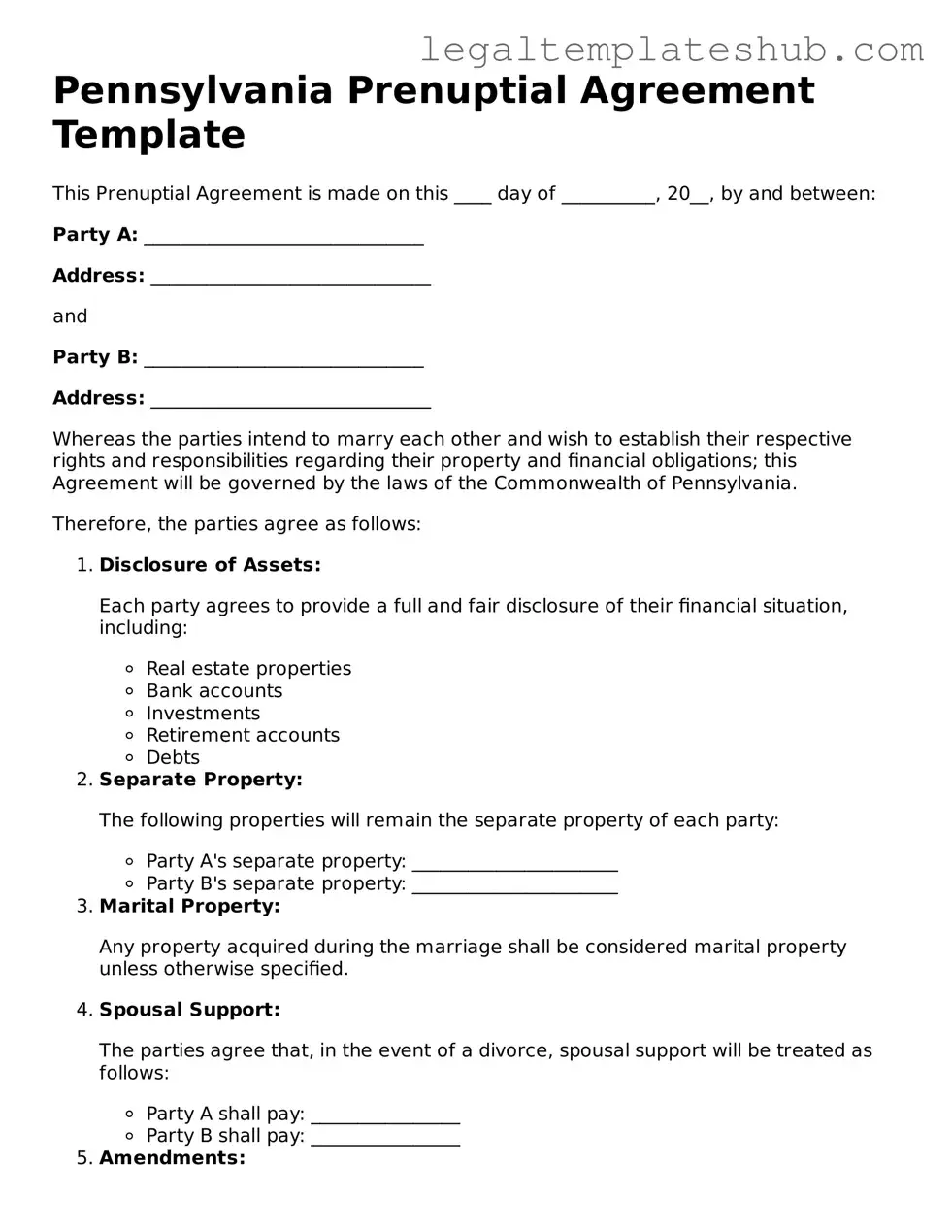Instructions on Filling in Pennsylvania Prenuptial Agreement
Filling out the Pennsylvania Prenuptial Agreement form is an important step in preparing for marriage. This form allows couples to clearly outline their rights and responsibilities regarding their assets and debts. Following these steps will help ensure that the process is straightforward and that all necessary information is accurately provided.
- Gather Personal Information: Start by collecting your full legal names, addresses, and dates of birth. Make sure to have this information for both parties.
- List Assets: Create a detailed list of all assets owned by each person. This includes real estate, bank accounts, retirement accounts, investments, and personal property.
- Detail Debts: Just as you listed your assets, you should also list any debts, such as loans, credit card balances, or mortgages.
- Discuss Financial Goals: Have a conversation with your partner about financial expectations and goals. This will help in drafting the agreement.
- Draft the Agreement: Using the collected information, begin to fill out the form. Clearly outline how assets and debts will be handled during the marriage and in the event of a divorce.
- Review the Agreement: After completing the form, both parties should review it carefully. Ensure that all information is accurate and that both parties agree with the terms.
- Sign the Agreement: Both individuals must sign the document in the presence of a notary public to make it legally binding.
- Store the Document Safely: Keep the signed agreement in a secure location, such as a safe or a secure digital file, where it can be easily accessed if needed.
Once the form is filled out and signed, it becomes an important legal document that can help clarify financial matters in your marriage. It’s advisable to consult with a legal expert to ensure that the agreement meets all necessary legal requirements and addresses your specific needs.
